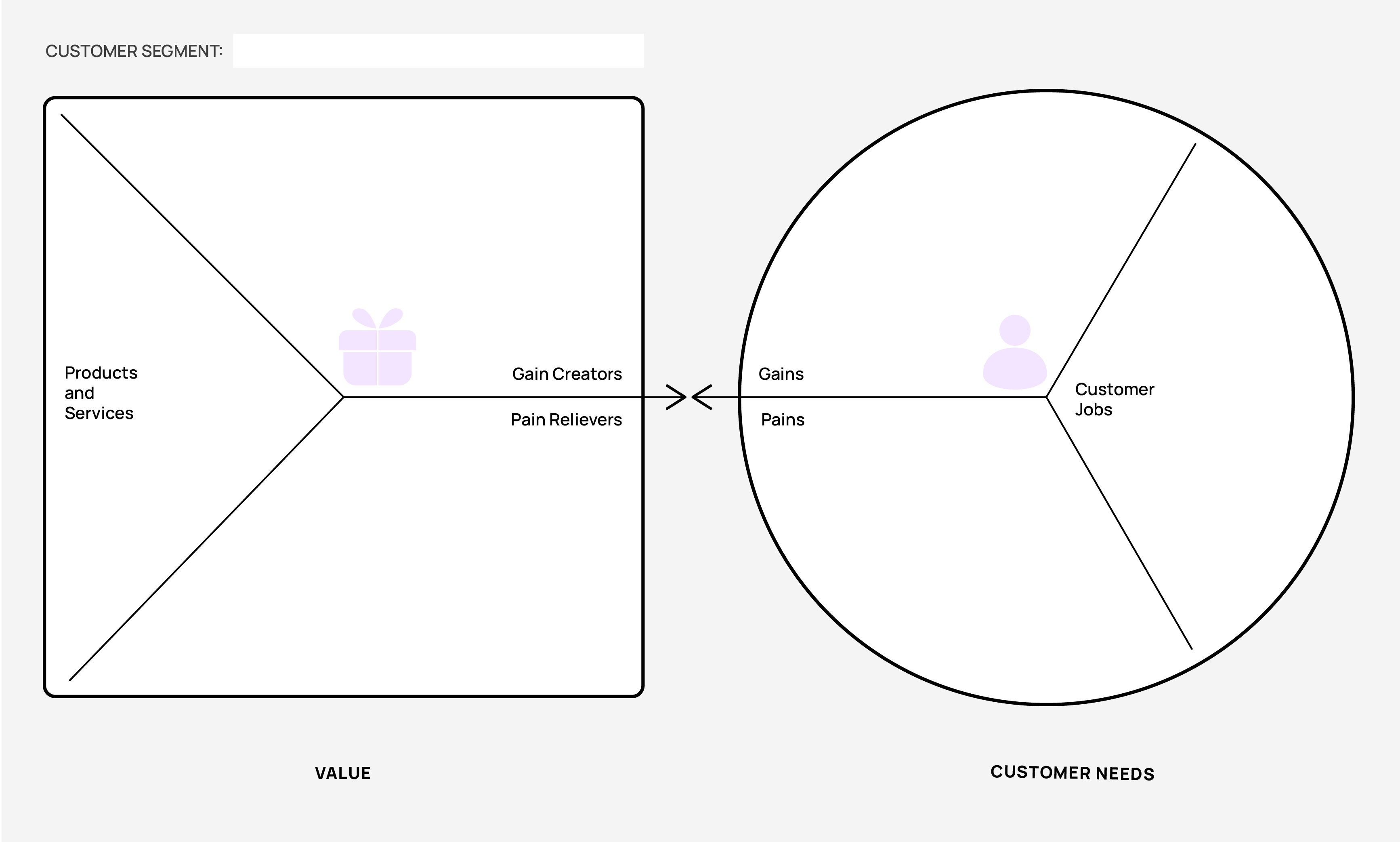Value proposition canvas
The Value Proposition Canvas (VPC) is a visual tool used to define and articulate the value of a product or service. It’s all about understanding what customers want and figuring out how the product or service can meet those needs. The left side of the canvas is focused on what value is being provided to customers, and the right side of the canvas is focused on what customer needs are.
Key concepts important in generating Value Proposition Canvases:
Customer segments: Different customer groups that an organisation targets with products or services
Customer jobs: Jobs the customer is trying to accomplish
Pains: The pains customers are experiencing in completing those jobs
Gains: Things customers want and need, which might make them more likely to choose a certain product or service
Pain Relievers: Things about a product or service that reduce customer challenges or frustrations
Gain Creators: Things about a product or service that delight customers
Products & Services: Offerings designed to address customer jobs, pains, and gains.
The results
- Visual of customer needs and how the product or service can help
- Improved Product Market Fit
- Improved understanding of how to meet the needs of target customers

When to use it
New Product Development: When creating new products or services
Product Improvement: When looking to make existing products or services better
Marketing: When planning marketing campaigns
Strengths
Customer-focused
Visual
Easy to iterate
Weaknesses
Subjective
Can lead to oversimplification
Can date quickly
How to use it?
What do I need to start?
Examples of inputs:
- Clarity on target customer segments. You can use customer segmentation analysis to do this
- Target customer insights, such as their needs, preferences, and behaviours
- Competitor research
How to use it?
Who to involve?
- Representatives who can provide customer insights
- People who can give practical and realistic viewpoints
- Advisors who can question assumptions and offer advice based on what works well in the industry
Step by step
1
Familiarise
Get familiar with the value proposition canvas.
2
Identify the customer
It’s useful to start with focusing on the customers and their needs first (right side of the canvas)
Identify and agree on the most important customer segments.
For each customer segment, identify the customer jobs, the pains and the gains. Questions to surface customer jobs include:
- ‘What tasks or goals are our customers looking to achieve?’
- ‘What challenges or frustrations do customers encounter when trying to accomplish these tasks or goals?’
- ‘How do customers currently address these challenges, and what improvements would customers like to see?’
Jobs to be done is another approach to frame customers jobs
3
Respond to customer needs
Next, focus on the value the product or services is looking to provide (left side of the canvas)
- For each customer segment, consider the product or service and how it could respond to customer needs.
- Responses to customer needs might be ‘pain relievers’ or ‘gain creators’
4
Assess the results
Consider:
- Which of the pains and gains are likely to be most important for customers?
- Is the product or service responding well to customer needs?
- Are there other products or services responding better to some or all of the customer needs, and if yes, why?
- Which pain relievers or gain creators might provide the most value?
5
Distill the canvas based on analysis and discussion
- Decide how to refine or create a product or service for your customer segments.
- Consider putting what you’ve learned into the Business Model Canvas. The Business Model Canvas will show how practical and profitable the ideas from the Value Proposition Canvas is.